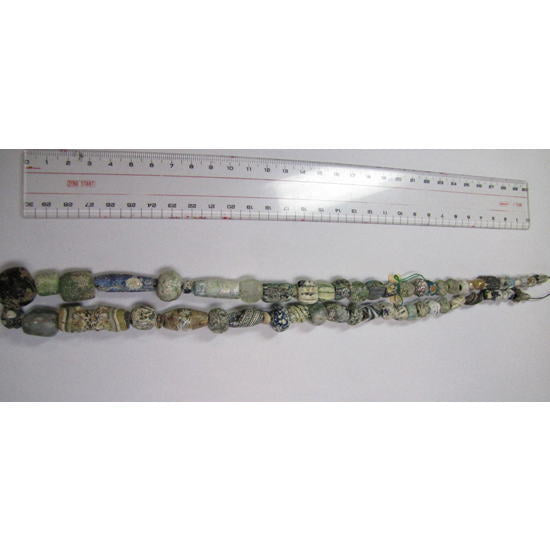MALAIKA
Ancient Roman Iridescent Glass
Ancient Roman Iridescent Glass
SKU:hn0609-014
Couldn't load pickup availability
Product Description: These Roman Beads, dating from the 1st century BCE to the 4th century CE, exhibit stunning iridescence due to prolonged burial underground. This natural weathering process gives the beads their characteristic silver or iridescent sheen.
Specifications:
- Origin: Alexandria (modern-day Egypt)
-
Size:
- Length: 64cm
- Central Bead Size: 18mm x 16mm
Note: As these are antique items, they may have scratches, cracks, or chips.
About Roman Beads:
Era: 1st century BCE - 4th century CE
Origin: Alexandria (modern-day Egypt), Coastal regions of Syria, and other areas
From the 1st century BCE through the 4th century CE, glass craftsmanship flourished in the Roman Empire. Many glass products were created and exported as trade items. These glass pieces, produced along the Mediterranean coast, spread over a vast area, reaching from Northern Europe to Japan.
Initially, most glass was opaque, but from the 1st century CE, transparent glass became increasingly popular. Beads crafted as jewelry were highly valued, while fragments of glass cups and pitchers with drilled holes are more commonly found and can still be acquired relatively inexpensively today.
Iridescence:
Iridescence is a weathering effect that occurs when glass is buried underground for many years, resulting in a shimmering, silver, or iridescent appearance.
Share



